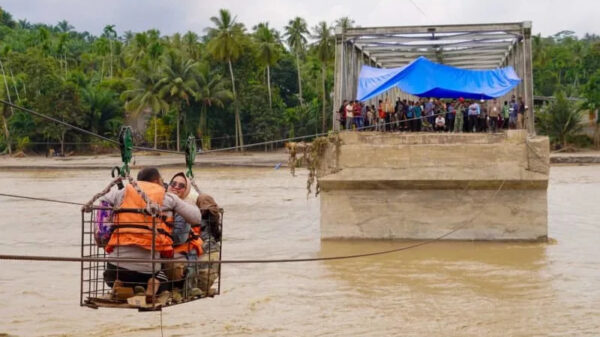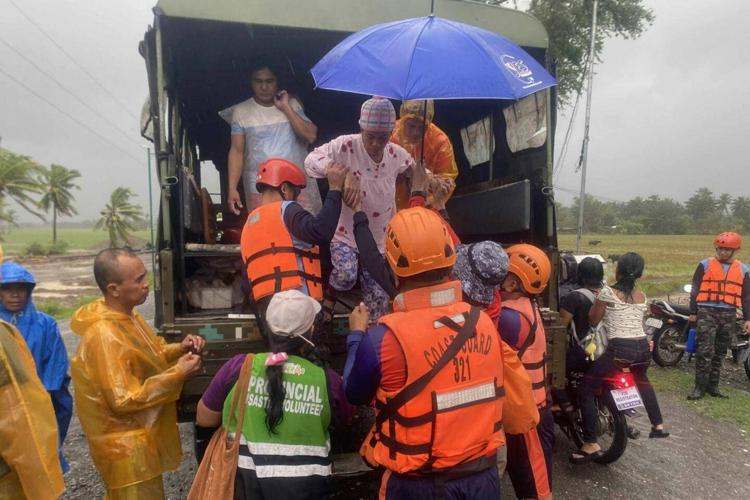Typhoon Fung-wong has swept away from the northwestern Philippines, resulting in at least eight fatalities and displacing over 1.4 million individuals. The storm, which made landfall on October 29, 2023, brought catastrophic flooding and landslides, leaving entire provinces without power. As it moves northwest toward Taiwan, the full extent of the damage is still unfolding.
Fung-wong, classified as a super typhoon with sustained winds reaching 185 kph (115 mph) and gusts up to 230 kph (143 mph), struck the northeastern province of Aurora on Sunday night. According to the Philippine Atmospheric, Geophysical and Astronomical Services Administration (PAGASA), the storm weakened as it progressed through mountainous regions and agricultural plains. By Monday, the typhoon had exited into the South China Sea.
Authorities reported multiple casualties linked to the typhoon’s impact. In the eastern province of Catanduanes, one person drowned due to flash floods. In Catbalogan city, a woman was killed when her house collapsed. Tragically, three children lost their lives in separate landslides in Nueva Vizcaya, and an elderly individual was killed in a mudslide in Barlig, located in Mountain Province. Additionally, two villagers died in a landslide in Lubuagan, Kalinga province, with two others unaccounted for.
Emergency Response and Continuing Threats
Prior to the typhoon’s arrival, more than 1.4 million people sought refuge in emergency shelters or the homes of relatives. As of Monday, approximately 318,000 individuals remained in evacuation centers. The storm caused flooding in at least 132 northern villages, trapping residents on rooftops as water levels surged. Preliminary reports indicate that around 1,000 houses sustained damage, with numerous roads blocked by landslides.
Bernardo Rafaelito Alejandro IV of the Office of Civil Defense warned that while the typhoon had passed, its residual rains continued to pose a danger in northern Luzon, including metropolitan Manila. “We’ll undertake today rescue, relief, and disaster-response operations,” Alejandro stated.
In light of the extensive destruction caused by Typhoon Kalmaegi, which struck just days earlier and resulted in at least 224 fatalities, President Ferdinand Marcos Jr. declared a state of emergency. Authorities have suspended classes and closed most government offices on Monday and Tuesday, while more than 325 domestic flights and 61 international flights were canceled. Approximately 6,600 commuters and cargo workers remain stranded in ports due to the coast guard’s prohibition on travel during rough seas.
Ongoing Vulnerabilities
The Philippines faces an average of 20 typhoons and storms each year, compounded by frequent earthquakes and the presence of over a dozen active volcanoes. This makes the nation one of the most disaster-prone countries globally. While the Philippines has not requested international assistance following the devastation of Typhoon Kalmaegi, reports suggest that both the United States and Japan stand ready to provide support if needed.
As recovery efforts begin, the focus remains on addressing the immediate needs of those affected and restoring normalcy in the wake of Typhoon Fung-wong’s destructive path.






































































